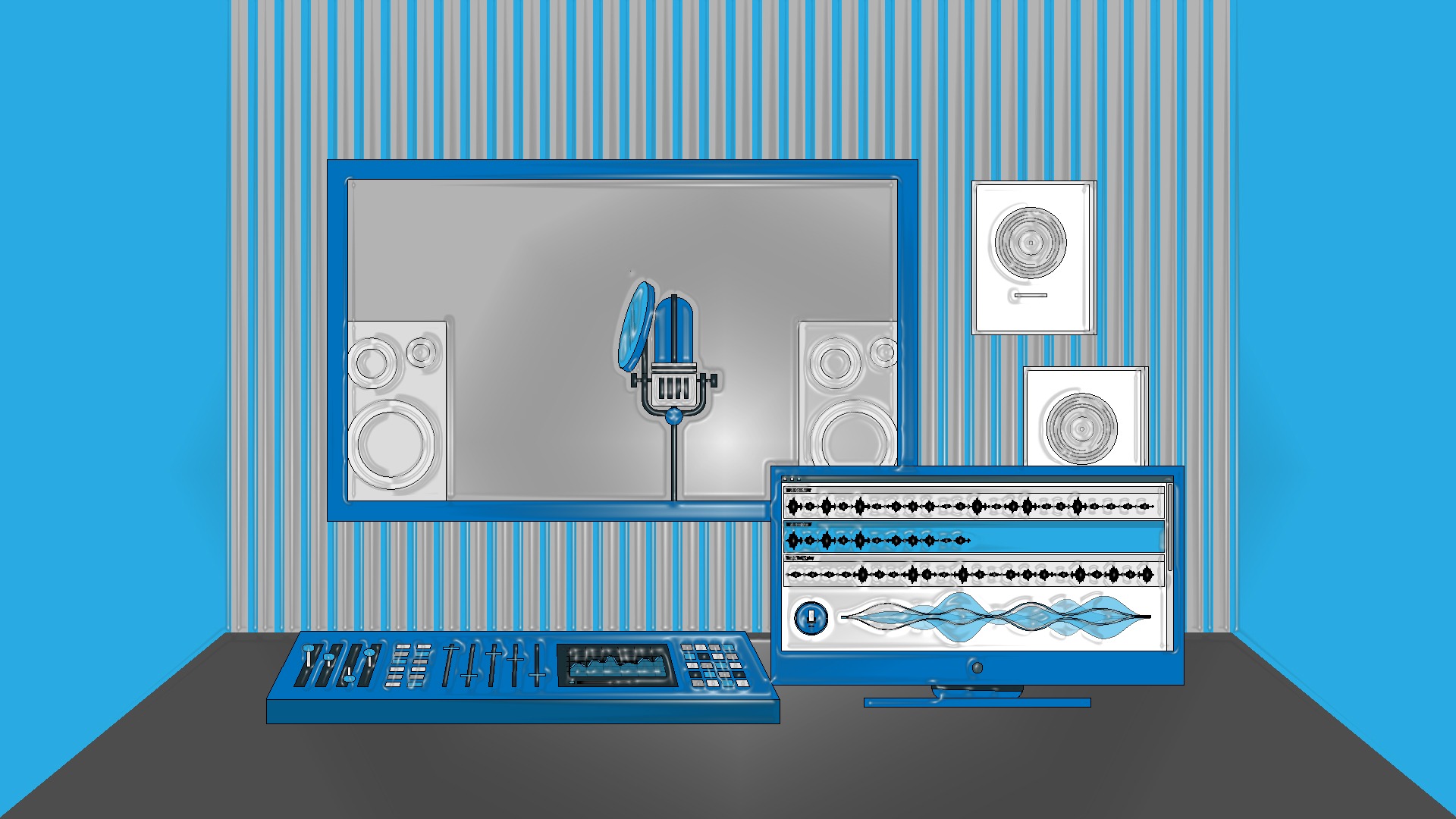Can you hear this? What is it saying? Houston, we have a problem: the vocals are not coming out clearly through the mix. On a track, the voice needs to be, if not loud (think Billie Eylish’s distinguishable whisper), very clear. Achieving pristine intelligibility in recording is a nuanced balancing act of audio engineering, which requires a comprehensive understanding of the diverse tools and techniques available to audio engineers. By understanding these common challenges and applying the suggested solutions, you can significantly enhance the clarity of your vocal recordings, bringing a level of professionalism and brilliance to your music production projects. Here’s a list of things to keep in check.
Follow the voice
In the studio, the prior focus should always be the voice artist. How do they sound? How are they doing during the recording session? Voice can be a fickle instrument to work with, and its worst enemy is tension in the body, which inhibits the sound produced. The voice should be free and sound free, but obstacles arise with the pressure once in the recording booth – the voice reveals what someone is in the midst of. Take this opportunity to coach the vocalist into relaxing, making them comfortable, and allowing them to express themselves. The emotions you are picking up on from the vocals while recording can influence the mix as well. Be all ears!
Mic’ing it up
This shouldn’t be news to you, but the tools used to pick up the sounds dictate much of the quality of the recording. Not all microphones were created equal; selecting the right type for what you are trying to do will significantly influence the sound.
Dynamic microphones are often favoured for live performances due to their robustness and ability to handle high sound pressure levels without distortion. They excel in environments where sound sources can be unpredictable, making them ideal for vocalists on stage. On the other hand, condenser microphones are generally preferred for vocal recordings in studio environments. Their sensitivity and wide frequency response allow them to capture the subtleties and rich tonal characteristics of the human voice with great fidelity.
When opting for a specific model, keep in mind that microphones with flat frequency responses are ideal for achieving a natural and accurate vocal sound. In some cases, microphones that emphasize the presence frequency range, typically around 5-10 kHz, can enhance vocal clarity, helping it to cut effectively through a dense mix. It’s advisable to experiment with various microphones and find one that complements the unique tonal qualities of the vocalist you’re recording, as each microphone imparts its distinctive character to the sound.
When it comes to mics, the best thing to do is to test, test, and test. Trials (and errors) are instrumental in discovering which microphone best captures the desired sound for your particular setup or artist.
Go the distance
Understanding the proximity effect is crucial to avoid common pitfalls while recording vocals. This phenomenon occurs when low frequencies are amplified as the sound source moves closer to the microphone. While this can add warmth to the vocal track, it can also result in a muddier or boomier sound if not controlled properly. Typically, maintaining a distance of about 6 to 12 inches from the microphone is recommended, though this can vary depending on the desired sound and the microphone type used. If the vocalist is positioned too far from the microphone, the resulting audio may lack fullness, sounding thin and lifeless, while too much ambient noise and room reverb may intrude. Finding the optimal distance is essential; aim for that ‘sweet spot’ where the vocals are rich and present, avoiding excessive buildup in the low frequencies.
Mind the frequencies
A cluttered mix can easily obscure vocals, making the quest for clarity feel insurmountable. A way to go about it is to focus on two critical frequency ranges: the midrange and low-end. Most vocal frequencies occupy the midrange spectrum, which overlaps significantly with other instruments such as guitars, keyboards, and snare drums. Overcrowding in this area can lead to competing sounds, resulting in vocals being buried within the mix. A strategic EQ approach is essential—identify the key frequency ranges of your vocals and apply cuts to those frequencies in competing instruments to carve out dedicated space for the vocals.
Excessive low-end information from bass-heavy instruments or kick drums can also detract from vocal clarity. This can introduce muddiness and take away valuable headroom in your mix. Utilizing high-pass filters on non-bass instruments, starting at around 80-100 Hz, can help eliminate unnecessary low-end buildup. Thoughtful EQ adjustments will clear up the low frequencies, ensuring that your vocals are prominent and clear.
Vocals usually occupy the center of a stereo mix, where they coexist with foundational elements like bass and kick drums. This central congestion is often a challenge, as it can hinder the vocals from standing out. Techniques such as panning other instruments away from the center and applying stereo-widening effects can create the necessary space for the vocals to take center stage.
Additionally, sidechain compression can be highly effective. This technique subtly reduces the volume of accompanying instruments when the vocalist is active, thereby allowing the vocals to maintain their prominence in the mix.
Extra help from audio tools
Using a de-esser can tame harsh sibilance in the vocal track and address problematic ‘s’ and ‘t’ sounds that can otherwise pierce through the mix uncomfortably. This allows you to enhance the high frequencies without worrying about sibilance overshadowing the vocals.
Instead of relying solely on compression for vocal level consistency, you can employ volume automation to manually adjust the levels across different sections of the vocal tracks for optimal balance. Apply gentle compression to your vocal tracks, aiming for a ratio between 2:1 and 4:1. Then, adjust the threshold so that the compressor activates only during louder passages, ensuring consistent vocal levels.
Finally, you can use reverb and delay effects sparingly to add depth without overwhelming the vocals. A pre-delay setting on the reverb can help maintain the initial vocal attack’s clarity while creating a sense of space.
The mix might be done, but the work never is! Consistently listening and referencing well-mixed professional tracks is the best school to perfect your craft. This practice can help you develop an ear for balance and tonal quality, allowing for effective adjustments in your mix. Remember, mixing is both an art and a science; mastering it takes extensive practice and patience. Keep experimenting with different techniques, and trust your ears—their guidance is indispensable in your musical journey.
For more vocal tips, check out Finding Your Voice: Singing That Goes Beyond
Written by Christelle Saint-Julien
Illustration by Holly Li






















